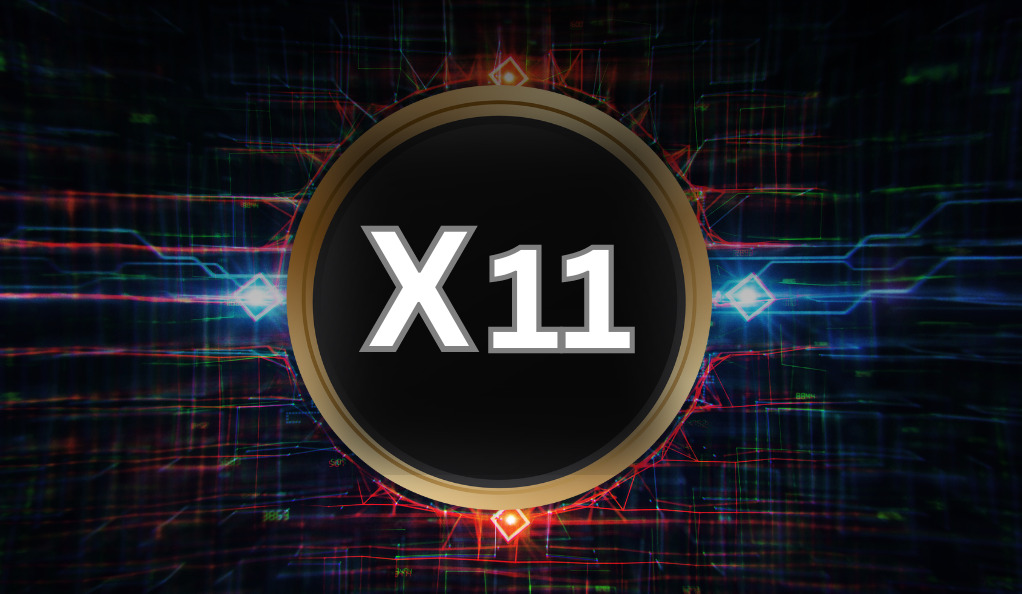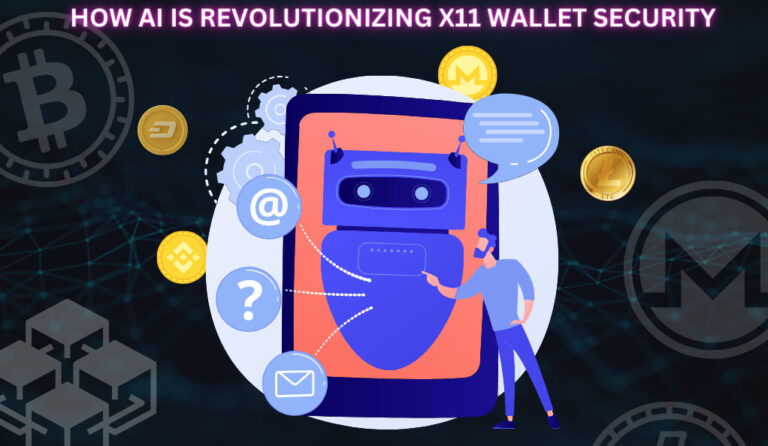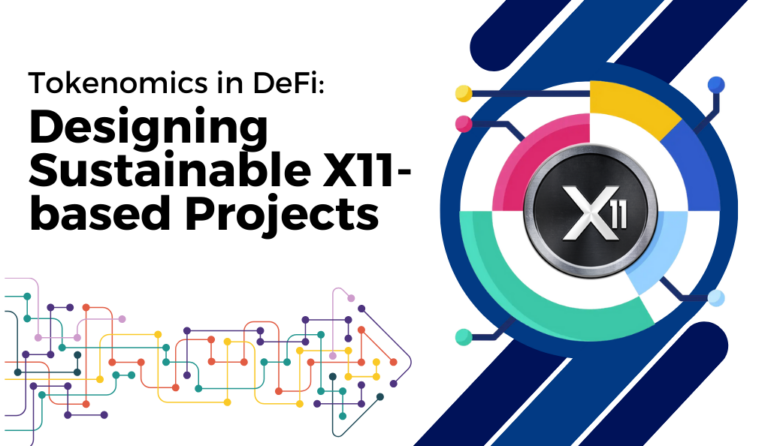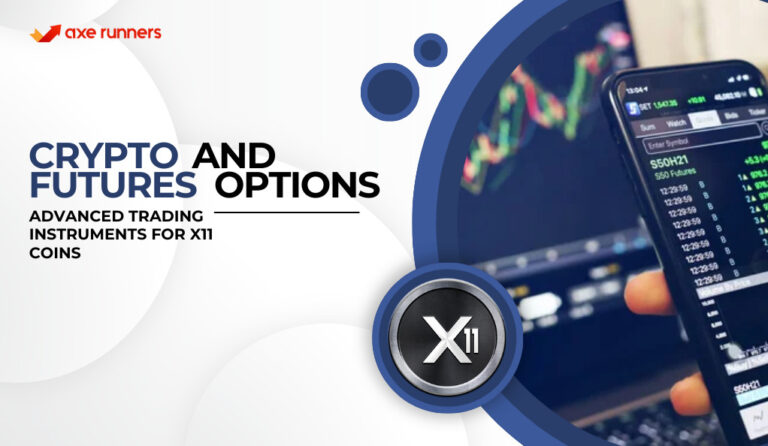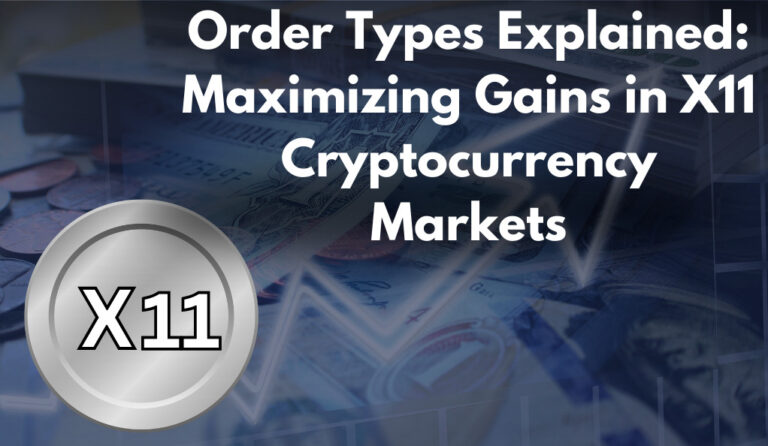In the vast landscape of cryptocurrency mining, X11 stands out as a unique and innovative algorithm, designed to offer both efficiency and security. But what exactly is X11, and why has it garnered such attention in the crypto community? Let’s delve into the intricacies of this algorithm and its implications for the world of digital currency.
What is X11 Mining?
X11 mining refers to the process of validating and adding transactions to a blockchain using the X11 algorithm. Named for its use of 11 different cryptographic hash functions, X11 is renowned for its energy efficiency and resistance to ASIC (Application-Specific Integrated Circuit) dominance, ensuring a more decentralized mining landscape.
Why 11 Hash Functions?
The use of 11 distinct hash functions isn’t arbitrary. This design choice enhances the security of the algorithm, making it more resistant to potential vulnerabilities. If a weakness is discovered in one hash function, the remaining ten provide a robust security layer, ensuring the integrity of the mining process.
Energy Efficiency: A Game Changer
One of the most significant advantages of X11 is its energy efficiency. Traditional mining algorithms, like Bitcoin’s SHA-256, require vast amounts of computational power, leading to high energy consumption. X11, on the other hand, is designed to be less resource-intensive, allowing for cooler and quieter mining operations. This not only reduces the environmental impact but also results in cost savings for miners.
ASIC Resistance: Leveling the Playing Field
The rise of ASICs in the mining world has been a double-edged sword. While they offer unparalleled efficiency, they also lead to mining centralization, as only those who can afford these expensive machines dominate the mining process. X11’s design inherently resists the dominance of ASICs, ensuring a more level playing field for all miners, from hobbyists to large-scale operations.
X11 Mining Algorithms: A Deep Dive
The world of cryptocurrencies is as diverse as it is complex, with various algorithms underpinning different digital currencies. Among these, the X11 algorithm has emerged as a standout, offering a blend of security and efficiency. But what sets X11 apart from its counterparts? Let’s embark on a journey to understand the depths of this algorithm.
The Genesis of X11
The X11 algorithm was introduced by Evan Duffield, the creator of Dash (formerly known as Darkcoin), a popular cryptocurrency. Duffield’s vision was clear: to create an algorithm that was not only secure but also energy-efficient and resistant to the monopolistic tendencies of ASIC mining.
The Mechanics of X11
At its core, X11 is a chained hashing algorithm. This means it uses a series of eleven scientific hashing algorithms for the proof-of-work. These are: blake, bmw, groestl, jh, keccak, skein, luffa, cubehash, shavite, simd, and echo. The multiple rounds of hashing ensure a higher degree of security and stability.
Benefits of Chained Hashing
Chained hashing, as employed by X11, offers several advantages:
- Security: With multiple rounds of hashing, it becomes exponentially difficult for potential attackers to find vulnerabilities.
- Diversity: The use of different hash functions means that an exploit in one function won’t compromise the entire network.
- Future-Proofing: As cryptographic techniques evolve, having multiple hash functions ensures that the algorithm remains resilient against unforeseen vulnerabilities.
ASIC Resistance: A Closer Look
While we touched upon ASIC resistance in the introduction, it’s worth delving deeper into this aspect. ASICs, due to their efficiency, can often lead to centralization in mining. A few entities with the resources to procure these machines can dominate the mining landscape. X11’s design inherently resists this. Its complex structure makes it challenging to design ASICs for, ensuring a decentralized mining environment.
The Evolution of X11
Since its inception, X11 has undergone several refinements to enhance its efficiency and security. The crypto community’s feedback and the continuous research in cryptographic techniques have informed these updates, ensuring that X11 remains at the forefront of mining algorithms.
Profitability in X11 Mining
In the realm of cryptocurrency mining, profitability is often the primary concern for miners. After all, mining is an investment of resources, both in terms of hardware and electricity. With the X11 algorithm gaining traction, many are curious about its potential returns. Let’s explore the factors that influence profitability in X11 mining and how miners can maximize their gains.
Determinants of Profitability
Several factors come into play when determining the profitability of X11 mining:
- Market Value of the Cryptocurrency: The price at which the mined cryptocurrency can be sold plays a significant role. A higher market value translates to higher returns.
- Mining Difficulty: As more miners join the network, the difficulty of solving the cryptographic puzzles increases. Higher difficulty means miners might need more time to find a block, affecting profitability.
- Operational Costs: This includes the cost of electricity, hardware maintenance, and any other associated expenses. Lower operational costs mean higher net profitability.
- Block Rewards: The number of coins awarded for solving a block can influence profitability. Some cryptocurrencies decrease rewards over time, which can impact returns.
X11 Mining: A Realistic Assessment
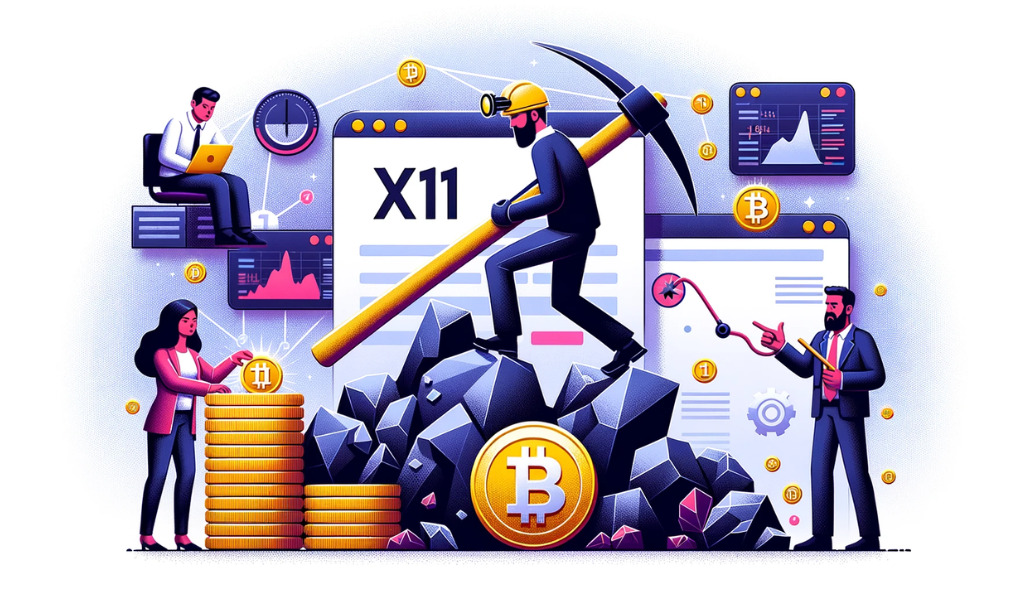
Given the ASIC resistance and energy efficiency of the X11 algorithm, it offers certain advantages:
- Lower Energy Bills: X11’s design ensures that mining consumes less power compared to some other algorithms, leading to savings on electricity.
- Longer Hardware Lifespan: Reduced energy consumption also means less heat generation, which can extend the life of mining hardware.
- Decentralized Mining Environment: The resistance to ASICs ensures that individual miners have a fair chance against large mining farms, potentially leading to more equitable distribution of block rewards.
| Factor | Description | Influence on Profitability |
|---|---|---|
| Market Value | Current selling price of the cryptocurrency | Direct |
| Mining Difficulty | Complexity of cryptographic puzzles | Inverse |
| Operational Costs | Expenses related to mining operations | Inverse |
| Block Rewards | Coins awarded for block discovery | Direct |
Strategies to Enhance Profitability
- Optimized Hardware Selection: Investing in efficient and powerful hardware can lead to faster block discoveries.
- Joining Mining Pools: Collaborating with other miners can increase the chances of block discovery, ensuring a steady stream of rewards.
- Regular Monitoring: Keeping an eye on market trends, mining difficulty, and operational costs can help in making informed decisions, such as switching to a more profitable cryptocurrency.
Centralization vs. Decentralization in X11 Mining
The debate between centralization and decentralization is not new to the world of cryptocurrencies. It touches the very ethos of digital currencies, which were conceived as a decentralized alternative to traditional financial systems. In the context of X11 mining, this debate takes on added significance due to the algorithm’s design and implications. Let’s delve deeper into this discussion and understand its ramifications for X11 miners.
Centralization in Cryptocurrency Mining
Centralization in mining refers to the scenario where a few entities or mining pools control a significant portion of the network’s mining power. This concentration can lead to:
- Monopoly on Block Rewards: A few entities might end up earning most of the rewards, leaving individual miners with minimal gains.
- Potential for a 51% Attack: If a single entity controls more than half the network’s mining power, it can potentially double-spend coins, undermining the integrity of the blockchain.
- Reduced Network Security: Centralization can make the network more vulnerable to targeted attacks.
Decentralization: The Ideal Scenario
Decentralization, on the other hand, ensures that mining power is distributed among many participants. This setup offers:
- Fair Distribution of Rewards: With more miners participating, block rewards are more equitably distributed.
- Enhanced Network Security: A decentralized network is less susceptible to targeted attacks or manipulations.
- True to the Ethos of Cryptocurrencies: Decentralization aligns with the foundational principles of digital currencies, promoting transparency and democratization.
X11’s Stance on the Debate
The X11 algorithm, with its ASIC resistance and energy efficiency, inherently promotes decentralization. Here’s how:
- ASIC Resistance: By resisting the dominance of ASICs, X11 ensures that individual miners and small-scale operations can compete fairly against large mining farms.
- Energy Efficiency: Lower energy consumption means that miners don’t need to be large-scale operations with massive resources to be profitable. This encourages participation from individual miners.
| Aspect | Centralization | Decentralization |
|---|---|---|
| Control | Concentrated in a few hands | Distributed among many |
| Security Risks | Higher (potential for 51% attacks) | Lower |
| Reward Distribution | Unequal | More equitable |
| Network Health | Potentially compromised | Robust and resilient |
X11 Mining Hardware: ASICs and Their Impact

The hardware landscape for cryptocurrency mining has seen significant evolution over the years. From CPUs to GPUs and now ASICs, the quest for more efficient and powerful mining equipment has been relentless. In the context of X11 mining, the role of ASICs has been particularly noteworthy. Let’s explore the world of X11 mining hardware and understand the profound impact of ASICs.
The Evolution of Mining Hardware
- CPUs (Central Processing Units): In the early days of cryptocurrencies, CPUs were the primary hardware used for mining. They are versatile and can handle a variety of tasks, but they are not optimized for mining, making them relatively inefficient for this purpose.
- GPUs (Graphics Processing Units): Miners soon realized that GPUs, designed for rendering graphics, were more efficient for the parallel processing tasks involved in mining. This led to a shift from CPUs to GPUs.
- ASICs (Application-Specific Integrated Circuits): The latest in the line of mining hardware, ASICs are designed specifically for mining purposes. They offer unparalleled efficiency but come with their own set of challenges.
ASICs: A Double-Edged Sword
While ASICs have revolutionized the mining industry with their efficiency, they also bring along certain challenges:
- High Entry Costs: ASIC miners are expensive, making it challenging for individual miners to enter the mining space.
- Centralization Concerns: The high costs mean that only those with significant resources can afford ASICs, leading to potential centralization of mining power.
- Lack of Versatility: Unlike CPUs and GPUs, which can be repurposed for other tasks, ASICs are designed solely for mining.
X11 and ASICs: A Complex Relationship
The X11 algorithm, known for its ASIC resistance, initially allowed for a more decentralized mining environment. However, as with many algorithms, hardware developers eventually designed ASICs optimized for X11. This development brought about a shift in the X11 mining landscape:
- Increased Mining Power: X11 ASICs can process the 11 hash functions of the X11 algorithm much faster than GPUs.
- Enhanced Profitability: For those who can afford X11 ASICs, the returns on investment can be significant due to the increased mining power.
- Challenges for Small Miners: Individual miners or those with limited resources face challenges in competing against ASIC-equipped mining operations.
The Way Forward
The emergence of ASICs in the X11 mining space underscores the constant tug-of-war between decentralization and the pursuit of efficiency. For the X11 algorithm to remain true to its roots, there may be a need for further refinements or adaptations to ensure a balanced mining ecosystem.
Risk Management Strategies for X11 Miners
In the volatile world of cryptocurrency mining, risk is an ever-present companion. From fluctuating market prices to evolving mining technologies, miners face a plethora of challenges that can impact their profitability and sustainability. For those involved in X11 mining, understanding these risks and implementing effective management strategies is crucial. Let’s delve into the various risks associated with X11 mining and explore strategies to mitigate them.
Identifying the Risks
- Market Volatility: The value of cryptocurrencies can be highly unpredictable, with prices subject to rapid fluctuations.
- Technological Obsolescence: The rapid pace of technological advancements means that today’s cutting-edge mining hardware might become outdated tomorrow.
- Regulatory Changes: Governments around the world are still formulating their stance on cryptocurrencies, and any regulatory changes can impact mining operations.
- Security Threats: From hacking attempts to phishing schemes, miners need to be wary of various security threats.
- Operational Failures: Hardware malfunctions, power outages, or software glitches can disrupt mining operations.
Strategies for Risk Management
- Diversification: Just as with traditional investments, diversifying your cryptocurrency portfolio can help spread and mitigate risks. Instead of mining a single cryptocurrency, consider diversifying across multiple coins that use the X11 algorithm.
- Regular Hardware and Software Updates: Keeping your mining hardware and software updated ensures that you’re equipped with the latest security patches and performance optimizations.
- Stay Informed: Keeping abreast of regulatory changes and market trends can help miners anticipate and adapt to potential challenges.
- Implement Security Protocols: Employ robust security measures, such as two-factor authentication, secure wallets, and regular backups, to safeguard your assets.
- Operational Redundancies: Having backup power solutions and spare hardware components can help quickly resume operations in case of any failures.
The Role of Community and Collaboration
One of the strengths of the cryptocurrency world is its vibrant and collaborative community. By actively participating in forums, discussions, and collaborative platforms, miners can share insights, warn each other of emerging threats, and collectively brainstorm solutions. This spirit of collaboration can be a powerful tool in risk management.
Navigating the Regulatory Landscape

The world of cryptocurrencies, while revolutionary, exists in a broader ecosystem governed by national and international regulations. For X11 miners, understanding this regulatory landscape is not just a matter of compliance, but it can also influence profitability, operational strategies, and long-term sustainability. Let’s explore the regulatory challenges and opportunities that X11 miners face.
The Global Regulatory Mosaic
Cryptocurrency regulations vary widely across countries:
- Friendly Jurisdictions: Countries like Switzerland, Malta, and Singapore have established themselves as crypto-friendly nations, offering clear regulations and fostering innovation.
- Restrictive Jurisdictions: Some countries, such as China and Morocco, have imposed stringent restrictions or outright bans on cryptocurrency activities, including mining.
- Ambiguous Jurisdictions: Many countries are still formulating their stance on cryptocurrencies, leading to a climate of uncertainty for miners and other stakeholders.
Implications for X11 Miners
- Operational Challenges: In countries with restrictive regulations, miners might face challenges ranging from the inability to access necessary hardware to legal repercussions.
- Taxation: The way mined cryptocurrencies are taxed can vary. In some jurisdictions, they might be treated as income, while in others, they could be considered capital gains.
- Licensing and Compliance: Some countries require miners to obtain specific licenses or adhere to particular compliance standards, adding to operational costs.
- Access to Banking and Financial Services: In some regions, banks might be wary of transacting with entities involved in cryptocurrency activities, making it challenging for miners to convert their earnings into fiat currency.
Strategies for Regulatory Navigation
- Stay Informed: Regularly monitor regulatory announcements and updates from both domestic and international sources.
- Engage with Local Crypto Communities: Local cryptocurrency associations and communities often have insights into the regulatory climate and can offer guidance.
- Consider Relocation: For miners in highly restrictive jurisdictions, relocating operations to a more crypto-friendly country might be a viable strategy.
- Legal Consultation: Engage with legal experts familiar with cryptocurrency regulations to ensure full compliance and understand potential legal challenges.
The Future of Cryptocurrency Regulations
As cryptocurrencies continue to gain mainstream acceptance, it’s likely that more countries will formulate clear regulations. While this might bring about certain restrictions, it can also offer clarity and stability, benefiting miners in the long run.
Community-Driven Development in X11 Cryptocurrencies
The cryptocurrency world is as much about technology as it is about the communities that support, develop, and advocate for these digital assets. For X11-based cryptocurrencies, the role of the community is paramount. From influencing development decisions to fostering adoption, the community’s involvement can make or break a cryptocurrency’s success. Let’s delve into the significance of community-driven development in the realm of X11 cryptocurrencies.
The Power of the Community
- Innovation and Development: Open-source projects, which many cryptocurrencies are based on, thrive on community contributions. Developers, enthusiasts, and users collaborate to introduce new features, fix bugs, and optimize the code.
- Decentralized Decision Making: In a decentralized ecosystem, major decisions—like protocol changes or forks—are often influenced by community consensus.
- Advocacy and Adoption: A passionate community can drive the adoption of a cryptocurrency by promoting it, developing user-friendly tools, and integrating it into various platforms.
X11 Cryptocurrencies: A Community-Centric Approach
Many X11-based cryptocurrencies, like Dash, emphasize community involvement:
- Proposal Systems: Some X11 cryptocurrencies have systems where community members can propose changes, developments, or marketing initiatives. These proposals are then voted on, ensuring that the community has a say in the project’s direction.
- Funding Mechanisms: Community proposals often come with funding requests, ensuring that promising projects or initiatives receive the necessary resources for execution.
- Educational Outreach: The community plays a pivotal role in educating newcomers, offering resources, tutorials, and support to those looking to understand or get involved in X11 mining or trading.
Challenges and Opportunities
While community-driven development offers numerous advantages, it’s not without challenges:
- Diverse Opinions: A diverse community can have varied opinions, leading to potential disagreements or splits.
- Coordination: Coordinating efforts in a decentralized community, especially in large projects, can be challenging.
- External Influences: Large stakeholders or entities with significant resources can sometimes disproportionately influence community decisions.
However, these challenges also present opportunities:
- Inclusive Development: A diverse community ensures that multiple perspectives are considered, leading to more holistic development.
- Resilience: A decentralized, community-driven project can be more resilient to external shocks or negative influences.
- Rapid Problem Solving: With many minds collaborating, issues can be identified and resolved quickly.
Security Concerns and Solutions in X11 Mining

In the digital age, security is paramount. The realm of X11 mining, while offering numerous advantages, is not immune to threats and vulnerabilities. From potential hacks to phishing attempts, miners need to be vigilant to safeguard their investments and ensure the integrity of their operations.
Understanding the Threat Landscape
- Unauthorized Access: Hackers might attempt to gain unauthorized access to mining rigs or wallets to divert mined cryptocurrencies.
- Phishing Attacks: Scammers can trick miners into revealing sensitive information, such as private keys or login credentials, through deceptive websites or emails.
- Malware and Ransomware: Malicious software can be used to hijack mining operations or lock out miners from their systems until a ransom is paid.
- 51% Attacks: If a single entity gains control of more than half of the network’s mining power, they can potentially double-spend coins or prevent transactions from being confirmed.
- Hardware Tampering: Physical access to mining rigs can lead to tampering, potentially compromising the hardware or the data it contains.
Implementing Robust Security Measures
- Multi-Factor Authentication (MFA): Implementing MFA for all mining-related accounts and wallets adds an additional layer of security, making unauthorized access more challenging.
- Regular Software Updates: Keeping mining software and operating systems updated ensures that you’re protected from known vulnerabilities.
- Hardware Wallets: Storing mined cryptocurrencies in hardware wallets, which are offline and immune to online hacks, offers enhanced security.
- VPN and Firewalls: Using a Virtual Private Network (VPN) and setting up firewalls can shield mining operations from potential online threats.
- Educate and Stay Informed: Being aware of the latest phishing tactics or potential vulnerabilities in the X11 algorithm can help miners avoid falling prey to scams.
| Threat | Description | Mitigation Strategy |
|---|---|---|
| Unauthorized Access | Hacking into mining operations | MFA, strong passwords |
| Phishing Attacks | Deceptive tactics to gain sensitive info | Education, email filters |
| Malware | Malicious software attacks | Regular software updates, antivirus |
| 51% Attacks | Dominance in mining power | Diversified mining, monitoring network health |
| Hardware Tampering | Physical interference with rigs | Secure physical locations, surveillance |
Community Collaboration for Enhanced Security
The cryptocurrency community, with its collaborative spirit, plays a pivotal role in enhancing security. By sharing information about potential threats, developing security tools, and collectively responding to challenges, the community can create a safer environment for all miners.
Conclusion
X11 mining, with its unique blend of security and efficiency, has made a notable mark in the cryptocurrency landscape. While it offers distinct advantages like energy efficiency and a community-driven approach, challenges such as evolving hardware and regulatory shifts persist. However, the core strengths of the X11 algorithm, combined with the proactive and collaborative spirit of the crypto community, position it for continued relevance in the ever-changing world of digital currencies. As we look ahead, the adaptability and innovation inherent to X11 mining underscore its potential to navigate future challenges and opportunities in the crypto domain.
At axerunners.com, our goal is to furnish well-rounded and trustworthy information regarding cryptocurrency, finance, trading, and stocks. Nonetheless, we avoid providing financial advice and instead encourage users to conduct their own research and meticulous verification.
Read More
